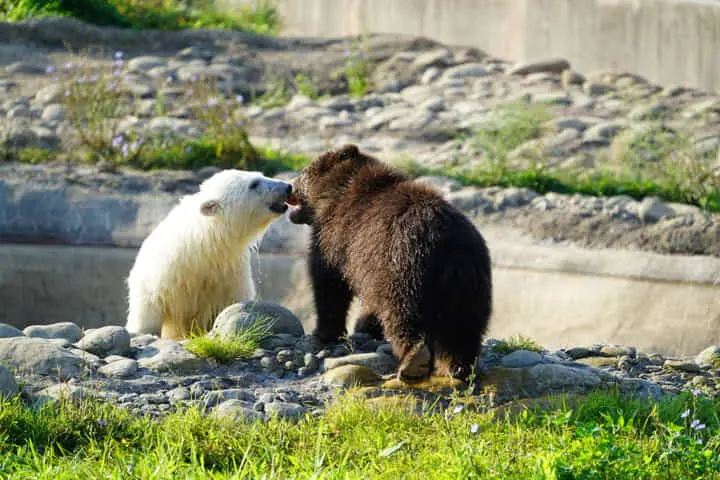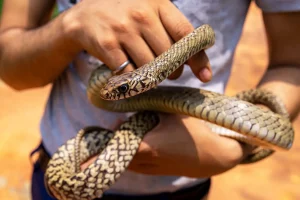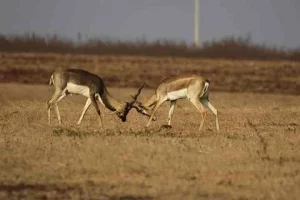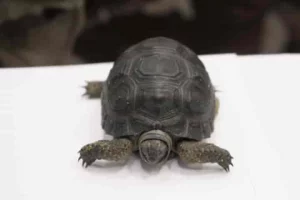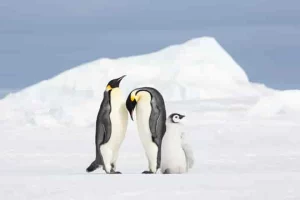Today the polar and the brown bears are living apart but in the past their habitats had overlapped and they had intermingled. Close examination of the DNA recovered from a polar bear’s skull which is 100,000-year-old shows that there was considerable hybridisation between brown and polar bears when the planet was going through its last interglacial period in the Pleistocene era, as per a report in sciencedaily.com.
Interestingly, the study revealed that there is a surprising quantum of polar bear ancestry in the genomes of present day living brown bears. This ancient DNA was retrieved from a juvenile polar bear skull found on the Beaufort Sea coast in Arctic Alaska in 2009. Nicknamed as Bruno, the skull belonged to a female.
The details of the study which were published in Nature Ecology & Evolution was headed by scientists from the University of California, Santa Cruz.
Highlighting the importance of this DNA, the study’s first author Ming-Shan Wang said: "The availability of Bruno's paleogenome has made it possible to detect an ancient admixture event that impacted all living brown bears.”
Wang is a postdoctoral scientist in the UCSC Paleogenomics Lab.
Sharing more details, the study’s corresponding author Beth Shapiro said that genetic analysis of Bruno showed that she was from a polar bear population which was ancestral to the living ones. It was somewhere around 125,000 years ago that the polar bear ancestors of Bruno crossed paths with the predecessors of all living brown bears and hybridised.
Shapiro is a professor of ecology and evolutionary biology at UC Santa Cruz as well as an investigator at the Howard Hughes Medical Institute.
This blending of the two species has resulted in polar bear ancestry being present in today’s brown living brown bears to a tune of 10 per cent. Expressing her view on this, Shapiro remarked: "We never would have seen this without Bruno's genome, because all living brown bears have that admixture as part of their genomes.”
Brown and polar bears are separate species and have distinctive demeanour, physical features and their domains are different yet they are related and can blend when their habitat ranges overlap. In recent times with changes in climate and sea ice vanishing, reports of hybrids have gone up with polar bears moving to Arctic coastal regions and their brown relatives expanding northwards.
Past research shows that admixture having taken place among some populace of brown bears between 15,000 and 25,000 years ago with the gene flowing from polar to brown bears.
Pointing out an interesting aspect about these mixed bears, Shapiro said: "The admixed individuals, if they survive, do so as brown bears, perhaps because they have difficulty hunting successfully on the sea ice if they are not completely white. Polar bears have always been a small population with not much genetic diversity."
Scientists are not sure as to what the brown bears achieved by having an ancestry traceable to polar bears.
While gene flow from brown bears into Bruno’s ancestry was found but as there are no admixture among today’s polar bears it leads to the deduction that the brown bear attributes don’t support the life of polar bears. Polar bears parted company with the brown ones 500,000 years ago and went on to become specialist predators of marine creatures while their brown counterparts hunted a diverse variety in Asia, North America and Europe.
Examination of Bruno suggests that she lived during a time when climate was undergoing a change following the peak of a warm interglacial period with sea levels and temperatures quite high. The present-day planet is a replica of those conditions due to burning of fossil fuels and other human activities.
Sounding a warning, the study’s co-author Ian Stirling who is a polar bear biologist from Canada’s Environment and Climate Change said: "If the rapid, unnatural, and severe human-caused warming of the Arctic we are documenting today continues unabated, it is uncertain whether polar bears will have a sea ice habitat to return to and survive genetically.”
The present conditions are ripe for the coming of the two species again. Talking about it, Shapiro said: "We shouldn't be surprised to see admixture happening again today as the climate changes and these species are overlapping and encountering each other again in the wild. Climate change allows gene flow to occur between what we think of as different species."
Bruno’s skull was found by chance by the study’s co-authors Pamela Groves, Daniel Mann and Michael Kunz, all of whom are from the University of Alaska Fairbanks. While strolling on the Beaufort Sea coastline they stumbled upon Bruno’s skull.
Also read: Citing of polar bears in Greenland cheers conservationists






